
and
the foundation of our work
OVERVIEW
BUIDING THE FUTURE: STEP BY STEP



and
the foundation of our work

It is with great pleasure that I present in the following pages, the fifth sustainability report published by HeidelbergCement Romania.
For us, 2017 was a succesfull year. We continued to take steps on the path of sustainable development, based on our constructions, innovation and responsibility. Guided by these extremely important aspects for the way we carry out our daily activity, this year we published a new plan that defines the key areas and principles of our sustainability strategy for the coming years. Thus, the 2030 Sustainability Commitments present the long-term goals we have set, to contribute day by day to building a better future, through the products we offer, but also through the way we operate. We have set ambitious goals, divided into six directions of strategic importance for us: economic performance and innovation, occupational health and safety, environment, circular economy, community relations, compliance with standards, legislation in force and transparency.
As always, one of our priorities in 2017 also was the safety of colleagues. The measures we implemented proved to be effective and thus, we did not register work related accidents among our employees or contractors. Although such successes encourage us, we will remain equally vigilant and focus on identifying risks, adopting the highest safety standards.
Our activity is based on natural resources, so we are aware that we have a responsibility to accelerate efficiency measures, both in terms of raw materials and in the direction of energy consumption. We are constantly increasing the proportion of alternative fuels used in production processes and investing in technologies to reduce greenhouse gas emissions.
All the work we do every year is supported by a team of dedicated professionals, who get involved and work actively to put ideas and solutions for optimizing workflows into practice. In the five years since the launch of the internal competition of ideas and innovation projects, our colleagues have submitted 40 projects, and 13 of them have been awarded for originality and efficiency.
We are and will always remain a company open to communication with all those interested in our activity, because we know that this is the only way we can grow sustainably: with care for all the actors we collaborate with, from suppliers to customers, with attention to all our processes and the environmental impact and involvement for the well-being and development of the communities around us.
Dr. Florian ALDEA Chairman–General Manager HeidelbergCement Romania
This is the fifth sustainability report of HeidelbergCement Romania.

The report provides information on the non-financial indicators related to the company’s activity between January 1 and December 31, 2017 and meets the requirements of Directive 2014/95/UE.
The report was prepared following the methodology proposed by the Global Reporting Initiative (GRI) Standards Core option and includes information presenting the economic, social and environmental performance of HeidelbergCement Romania S.A. (“HeidelbergCement Romania”). Where necessary, for an overview of our work, information on the activity of the HeidelbergCement Group was also presented.
The report was developed based on the material topics identified following an internal analysis and a stakeholder consultation process carried out in the previous reporting cycle.
Throughout the process, the HeidelbergCement Romania team was supported by The CSR Agency consultants.
questions, suggestions or notifications regarding this report, you can contact us at:
Arnăutu Communications Manager
Romania Headquarters
București-Ploiești Road Bucharest Business Park, building C2
Bucharest, Romania




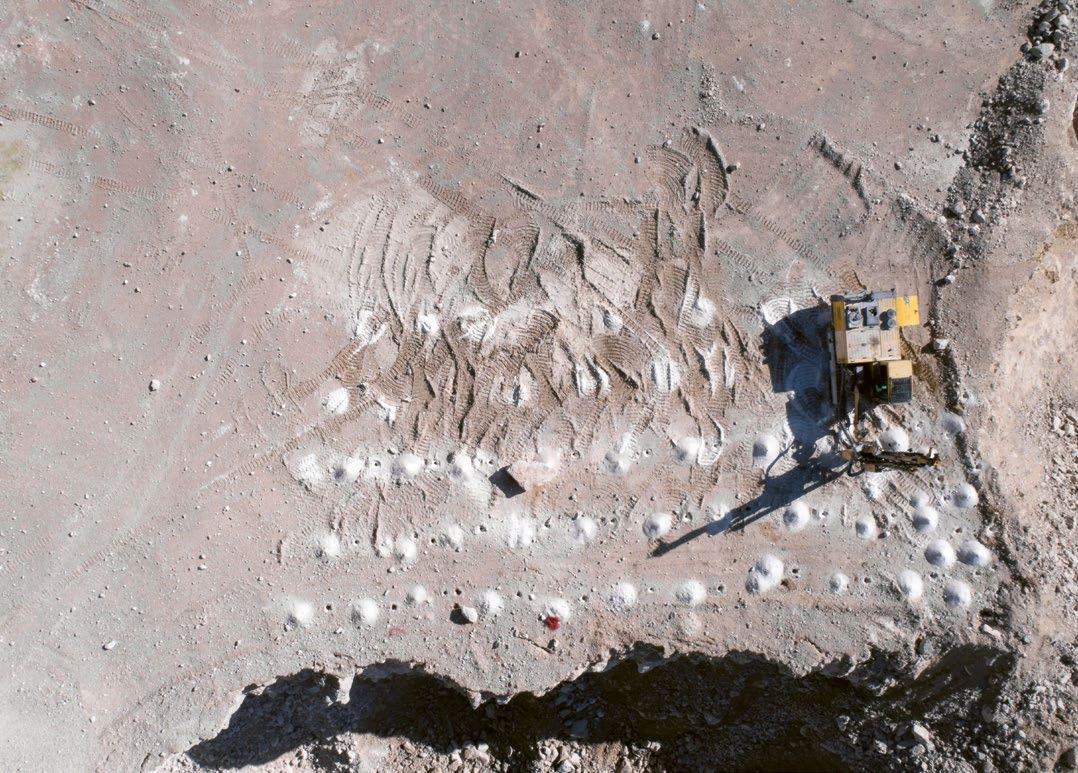
HeidelbergCement is one of the world’s leading manufacturers of building materials. The company was consolidated in 2015, through the merger of Carpatcement Holding S.A., Carpat Beton S.R.L. and Carpat Agregate S.A., which were founded between 1998 and 2004 as part of the investments made in Romania by the HeidelbergCement German Group.
Romania operates a national network of 21 ready-mixed concrete plants. In 2017, the plants in Iași and Piatra Neamț came into use.
We are proud to be contributing to building a strong society, day by day. In addition to the economic value generated, we create jobs, support the development of the communities in which we operate, constantly aiming to improve their quality of life.
FIXED ASSETS - TOTAL 660,267,059
CURRENT ASSETS - TOTAL, of which 700,270,429
INVENTORIES (raw materials, materials, work in progress, semi-finished products, finished products, goods, etc.) 180,859,879
CLAIMS 508,712,078
CASH AND BANK ACCOUNTS 1,543,357
ACCRUED EXPENSES 8,638,939
LIABILITIES 174,162,652
DEFERRED REVENUE 33,313,110
PROVISIONS 44,911,901
CAPITAL - TOTAL, of which 1,116,788,764
SUBSCRIBED PAIN-IN SHARE CAPITAL 283,556,000
STATE-OWNED EQUITY PLUS ASSESTS
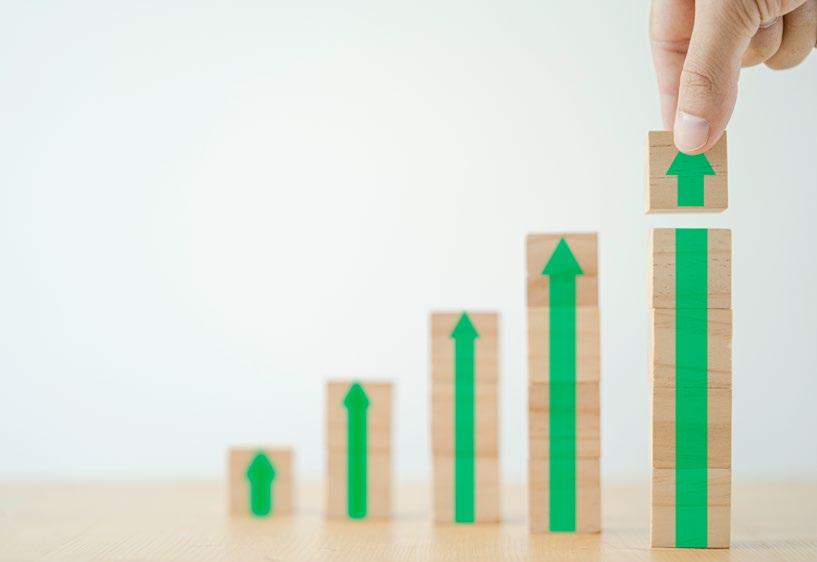
NET TURNOVER 890,530,183
TOTAL REVENUE 872,556,749
TOTAL EXPENSES 707,551,872
PROFIT 165,004,877
LOSS 0
PROFIT 135,335,239
LOSS 0
Indicators from the annual accounting reports as of December 31, 2017 submitted according to the Order of the Minister of Public Finance no. 470/2017 on the main aspects related to the preparation and submission of annual financial statements and annual accounting reports of economic operators to the territorial units of the Ministry of Public Finance, as well as for amending and supplementing accounting regulations.
The information presented is not as detailed as required by the standard due to the fact that it represents confidential information, and its disclosure could generate a competitive disadvantage.
Ensuring the sustainability of constructions is a priority for us, as material suppliers in this sector. This aspect is also essential for the national economy. We take all necessary measures to ensure that our products comply with current legislation and we strictly follow the Code of Practice for Concrete Production (CP 012 / 1-2007), developed under the coordination of the Ministry of Development, Public Works and Housing, which includes criteria on characteristics and quality of concrete, cement and aggregates.
Cements are manufactured based on SR EN 197-2011 European standard, which provides the physico-chemical and mechanical conditions necessary to be met by a set of common types of cement, considered traditional and well verified by the national standardization bodies in the European Standardization Committee.
The Carpatcement cement portfolio – in bulk - represents a balanced mix between new and traditional cements, which meets the expectations of our customers regarding the possibility of producing durable concrete, both common (usual) and special.
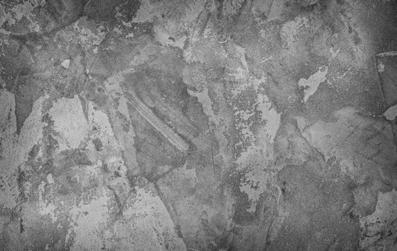
The cement produced and sold in bags is of superior class and with high initial resistance.

Concrete is a homogeneous mixture of cement, various types of aggregates (sand, gravel, chippings, etc.), water and additives in well-established proportions, depending on the desired compressive strength class, the preparation technology and the implementation as well as the aggressiveness of the environment in which they are to be exploited.
The Innovation Competition is a way for all of us who work in this company to put into practice optimization ideas, designed to facilitate our daily work and, at the same time, to help grow our business.
Expedition Coordinator at Tașca cement plant

The aggregates used in the composition of cement concrete can be granular, natural, artificial or recycled materials, usable in constructions in accordance with the provisions of the regulations in force. Most aggregates used in concrete plants - from gravel pits or quarries - must comply with the requirements of SR EN 12620: 2003 standard.
In the five years since the launch of our innovation platform, 40 projects have been proposed and evaluated in the internal competition, and 13 projects have been awarded for their originality and efficiency in optimizing equipment and workflows.
During the Innovation Competition at the end of 2017, two projects proposed by the employees of the production section of the Tașca cement plant won Second Prize.
] Reducing the size of cement bags
By observing the packing process, it was found that the bags were not filled well enough. The proposed solution was to narrow them, which resulted in a substantial saving of paper, as well as a higher strength of the bags, as cement is more compact in the bag, which helps reduce shocks during collisions.
The central evaluation commission appreciated the efficiency of this solution, which was industrially tested and implemented, with very good results, in terms of cost reduction as well as increased reliability of the bags and reduced wear of the palletizer strips. The biggest advantage of the award-winning solution is that it can be implemented in other cement plants.
] Separation of dust from the no. 3 cement mill filter in order to optimize the grinding process
This project consists in modifying the machine to separate the part of the electrofilter dust with a large specific surface area, so that it can be passed directly into the finished product. The proposed technical solution was implemented, having a direct impact in reducing energy consumption for all assortments of cement produced.





HeidelbergCement Romania is managed by a General Manager, who is at the same time Chairman of the Board of Directors. The activity of the Board of Directors, which has two other members, is supported by the Executive Committee (EXCOM).
florian aldea position
Chairman–General Manager nationality Romanian
albert scheuer position
Non-executive administrator nationality German
christian mikli position
Non-executive administrator nationality German
We strive to constantly achieve a high degree of performance, that is why we are aware that a continuous growth of our company is possible only if we generate value for the whole community, always acting in a proper way. We also understand that innovation and performance are the result of a free market, with competition being the engine behind them. Thus, our activity is governed by solid values, built around ethics and integrity.
In order to achieve our goals, thus maintaining our position, and even to surpass ourselves every day, we strive to minimize risks as much as possible and take advantage of opportunities. We pay close attention to this aspect, while responsibility is assumed at the highest level, within the Board of Directors. At the same time it is a key task for all HeidelbergCement managers.
At Group level, we accept some risks as part of our entrepreneurial activity, if they comply with our legal and ethical principles. Risk management is closely linked to the planning and monitoring systems, the opportunities being registered in the annual operational plan.
Risks that have a significant impact on assets, finances and revenue are divided into four categories: financial risks, strategic risks, operational risks, as well as legal and compliance risks. These also include non-financial or sustainability risks.

In order to identify and assess existing risks, the activities carried out in HeidelbergCement’s plants and operating locations are analyzed using the following criteria: potential risk, probability of occurrence and impact. Appropriate control measures and action plans are established based on the results of these analyzes.
HeidelbergCement Romania’s Compliance Policy, which came into force in 2016, is developed based on the Group’s policy and is addressed to all the company’s employees.
The Compliance Officer is responsible of the compliance management within HeidelbergCement Romania, which includes the following aspects:
] Compliance management as part of the social responsibility management system; ] Code of Professional Conduct; ] Anti-corruption; ] Commercial fines;
] Competition rules.
Also, within HeidelbergCement Romania, a Compliance Committee is organized (General Manager, Legal Director, Human Resources Director and Compliance Officer), which meets annually to analyze:
] the main aspects regarding compliance within HeidelbergCement Romania;
] the annual report on compliance incidents and their management;
] actions, measures, policies to be implemented or developed to ensure continuous improvement in the field of compliance
chairman general manager
• following compliance rules and adopting the correct conduct
compliance officer • developing, implementing and supervising the organization of the compliance activity
Within the HeidelbergCement Group there is the Compliance Program, which also includes the Anti-Corruption Guide, which aims to prevent corruption and applies to all companies within the Group. It exceeds the legislative requirements, the guide referring to unethical behavior which is banned and sanctioned.
The main violations in the field of corruption referred to in the guide are: bribery, influence peddling, buying influence. At the same time, it refers to the activity of HeidelbergCement on Social Responsibility, which must also be carried out in an ethical manner, focusing on the well-being of local communities and without seeking profit.
The guide is addressed to all employees involved in procedures in which acts of corruption could occur, especially:
] employees involved in purchasing, ie purchasing specialists and those responsible for defining the quality of goods to be purchased;
] employees of speciality departments that use external service providers;
] employees responsible for obtaining government approvals;
] employees in the sales department;
] employees involved in mergers & acquisitions;

] employees involved in the Social Responsibility activities that accompany the HeidelbergCement Group’s investment projects.
The company’s employees benefit from information and training on their obligations and responsibilities when it comes to anti-corruption procedures. Specialized training and meeting programs are planned regularly. Training sessions must be held at least once every two years.
If employees have questions about the Anti-Corruption Guide, they can contact the Compliance Officer (contact details are included in the document) or they can contact the Legal Department.
The compliance program also provides for the early warning of any real or potential non-compliance incident, which can subsequently be recorded and analyzed. In this regard, the main tool is a reporting system that encourages and gives employees the opportunity to make known any findings of non-compliant behavior and to pass it on correctly to relevant people in the organization.
Therefore, employees are required to immediately report any non-compliant practice to a superior, the compliance officer, the company’s Legal Department, the director of another relevant department / other relevant unit, or through the SpeakUp line. The SpeakUp line can also be used by business partners if an employee of the company acts improperly.
We contribute to building the future every day, both through our products and the way we operate. We are aware that our work and our position as industry leaders are accompanied by significant responsibility to people, both those who work with us and those in local communities and to the environment.
That is why, in 2017, we published our Sustainability Commitments for 2030, undertaken at Group level. They define the key topics and principles of the sustainability strategy and motivate us to continually improve in order to build a better world.
In 2017, there were no recorded incidents of corruption within HeidelbergCement Romania, and the company was not sanctioned for non-compliance with social and economic legislation or for anti-competitive behavior.
“We will ensure sustainable profitability through the efficient management of all processes and resources and through the continuous innovation of products and services.”
“We conserve nature reserves by continuously increasing the use of alternative resources as substitutes for natural raw materials.”
“We are committed to constantly improving the occupational health and safety conditions for employees, contractors and third parties.”
“We took on the responsibility to support the social and economic development of neighboring communities and to ensure transparent communication with all our stakeholders.”
“We are committed to fulfilling our share of the global responsibility to keep the temperature rise below 2° Celsius and we will continue to reduce the impact on air, land and water.”
“We comply with international human rights, anti-corruption and labor standards and are always proactive, working openly and transparently with our stakeholders.”
More information on the 2030 Sustainability Commitments is available on the HeidelbergCement Group website, available in English or German, here.
addition, by assuming the 2030 Sustainability Commitments, we contribute to achieving the Sustainable Development Goals, a set of 17 goals that aim to address the most pressing social, economic and environmental issues globally.

objectives set by the United Nations act as a guide for economic actors, who have a key role to play in achieving them, through their power to innovate and influence society.
The role of the materiality analysis is to reveal those topics of interest to stakeholders, which at the same time represent areas where the company has a significant impact.
To achieve this, the company’s experts evaluated the company’s impact on a number of social, economic and environmental issues, and the company’s stakeholders were consulted to find out the extent to which they are influenced by HeidelbergCement Romania’s policies and practices on each topic.
This process took place in previous years, but the topics are constantly monitored, and they are also updated annually, based on dialogues with representatives of the communities where we operate, during the meetings of the community advisory councils - “Sfatul Bătrânilor” and “Sfatul Jurnaliștilor”.
results of this process are the basis for the development of this sustainability report, the revealed topics being grouped in the following categories:
Products and Services, Environmental Compliance, Economic Performance, Market Presence, Local Communities, Anti-Corruption, Anti-Competitive Behaviour, Socio-economic Compliance, Employment, Labour – management Relations, Occupational Health and Safety, Training and Education, Diversity and Equal Opportunities, Freedom of Association and Collective Bargaining
Energy, Water, Biodiversity, Emissions, Effluents and waste, Products and services, Environmental compliance, Transport Supplier Environmental Assessment, Economic Performance, Indirect Economic Impacts, Purchasing Practices, Anti-Corruption, AntiCompetitive Behaviour, Socioeconomic Compliance, Customer Health and Safety, Marketing and Labelling, Occupational Health and Safety, Supplier Social Assessment, Supplier Human Rights Assessment
Promoting volunteering actions

HeidelbergCement Romania apprenticeship program
Career development plan
Performance driven competitions
Innovation Competition
Internal magazine
Annual sustainability report
Strict compliance with legislation in force
Taxes and duties
Supporting infrastructure projects through material donations
Participation in platforms for common interest projects
Contribution to the development of local communities
Investments in education, infrastructure, sports, healthcare
Annual sustainability report
Sfatul Bătrânilor
Meetings
Suppliers
Emissions, Products and Services, Supplier Environmental Assessment, Economic Performance, Indirect Economic Impacts, Purchasing Practices, Anti-Corruption, AntiCompetitive Behaviour, Socioeconomic Compliance, Customer Health and Safety, Marketing and Labelling, Supplier Social Assessment, Supplier Human Rights Assessment
` Long-term partnerships
` Supporting local suppliers
` Annual sustainability report
Open Days
Meetings
Customers
networks
Energy, Water, Biodiversity, Emissions, Effluents and Waste, Products and Services, Environmental Compliance, Transport, Economic Performance, Indirect
Economic Impacts, Anti-Corruption, Anti-Competitive Behaviour, Socioeconomic Compliance, Customer Health and Safety, Marketing and Labelling
` Expanding product portfolio
` Certification of our products and plants
` Ensuring availability of product user manuals on the company’s website
` Innovation
Open Days
NGO’s
Meetings
Phone
Events
Social networks
Energy, Water, Biodiversity, Emissions, Effluents and Waste, Products and Services, Environmental Compliance, Transport, Supplier Environmental Assessment, Economic Performance, Indirect Economic Impacts, Local Communities, Anti-Corruption, Socioeconomic Compliance, Customer Health and Safety, Employment, Labour – management relations, Occupational Health and Safety, Training and Education, Diversity and Equal Opportunities, Supplier Social Assessment, Freedom of Association and Collective Bargaining, Supplier Human Rights Assessment
` Project partnerships for members of local communities
` Involvement by allocating human or financial resources
` Donations and sponsorships
` Open Days
Media
Energy, Water, Biodiversity, Emissions, Effluents and Waste, Products and Services, Environmental Compliance, Transport, Supplier Environmental Assessment, Economic Performance, Market presence, Indirect
Economic Impacts, Local Communities, Anti-Corruption, AntiCompetitive Behaviour, Customer Health and Safety, Employment, Occupational Health and Safety, Diversity and Equal Opportunities
` Press conferences
` Open Days
` Sfatul Bătrânilor
` Sfatul Jurnaliștilor
Local communities
Meetings
Events
Social networks
Regular consultation meetins
Water, Biodiversity, Emissions, Effluents and Waste, Environmental Compliance, Economic Performance, Market Presence, Indirect Economic Impacts, Purchasing Practices, Local Communities, Socioeconomic Compliance, Employment, Occupational Health and Safety
` Quarry Life Award competition
` Consultations with representatives of local communities („Sfatul Bătrânilor” or „Sfatul Jurnaliștilor”)
` Financial or material support for local development projects
` Investments to reduce environmental impact
` “Young Environment Guardians” project
` “Access to education” project
` HeidelbergCement Romania apprenticeship program





the
of
of
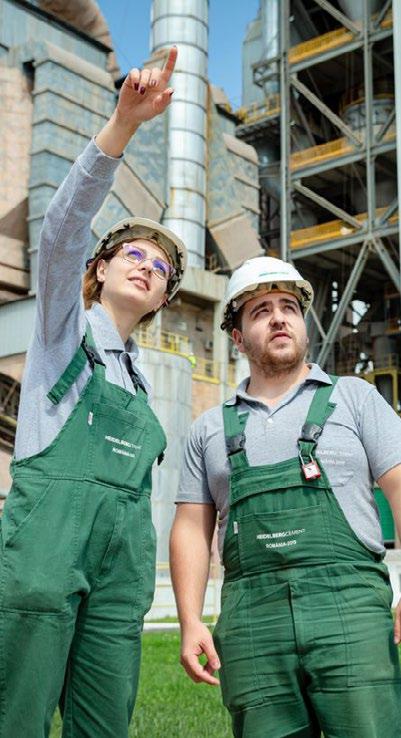
#staff turnover by gender, age and location
new employees employees who left
No. Rate No. Rate gender
Women 19 1.97 14 1.45
Men 73 7.56 55 5.7 total 92 9.53 69 7.15 age group
<30 31 3.21 15 1.55
30-50 55 5.7 30 3.11
>50 6 0.62 24 2.49 total 92 9.53 69 7.15 location
Bucharest Headquarters 6 0.62 6 0.62
Tașca 20 2.07 13 1.35
Chișcădaga 16 1.66 9 0.93
Fieni 14 1.45 14 1.45
Aggregates Division 11 1.14 12 1.24
RMC Division 25 2.59 15 1.55 total 92 9.53 69 7
Ensuring a fair work environment, in which every employee has the opportunity to reach their potential, is an integral part of our sustainable development strategy. The company systematically approaches the principles of social responsibility by designing, implementing and maintaining a Social Responsibility management system in accordance with the requirements of the SA 8000 standard, taking into account the concrete situations in the environment in which it operates.
This standard refers to the practices that the company is responsible for promoting among employees, suppliers / subcontractors regarding:
` Child labour; ` Young workers labour; ` Forced and compulsory labor; ` Health and safety;
` Freedom of association and collective bargaining; ` Discrimination; ` Disciplinary practices; ` Working time; ` Remuneration; ` Social responsibility management system.
At Group level, personnel policy prioritizes diversity in team building. By diversity we mean a management concept that brings people with different personalities, cultures, skills and experiences together in a way that reflects the international and multifaceted nature of markets, our customer base and our business environment.
Our goal is to attract and promote qualified and dedicated employees who can bring various social and professional skills in the company, thus contributing to our success.
We treat all employees with dignity and respect, offer them equal opportunities to work, any discrimination based on age, sex, nationality, religion, physical or mental disability, ethnicity, political choice, sexual orientation or any other personal characteristics, being strictly prohibited within the company.
#employees by gender, age and category
category & age senior management middle management white collar blue collar total
men <30 0 2 21 32 55 30-50 14 28 117 236 395 >50 5 15 80 176 276 total 19 45 218 444 726
women <30 0 0 11 2 13 30-50 1 4 87 30 122 >50 1 2 57 44 104 total 2 6 155 76 239
#employees by gender 2016 2017 no. % no. %
men 712 75.34 726 75.23 women 233 24.66 239 24.77 total 945 100 965 100
In 2017, the average age in the company was 48 years.
#employees with disabilities
blue collar white collar
men 1 1 women 0 0
In 2017, there were no recorded discrimation incidents within the company.
Respect for human rights is an essential aspect of our company. In addition to strictly complying with the legislation in force, we are committed, at Group level, to respecting the principles of the following international standards:
the Universal Declaration of Human Rights
the eight fundamental labour standards of the International Labour Organisation (ILO)
the Organisation for Economic Cooperation and Development (OECD) Guidelines for Multinational Enterprises,
the United Nations (UN) Guiding Principles on Business and Human Rights („Protect, Respect and Remedy” Framework)
We expect our employees and business partners to follow the main guidelines and recommendations. This priority topic for us is included in the Code of Conduct, which underlies all contractual relations. To ensure that our partners share our values, we evaluate suppliers through a variety of criteria, including social responsibility.
The collective bargaining agreement includes information on the notice period and the provisions for consultation, that all employees benefit from. The notice period in case of significant operational changes is 20 days (3 weeks).
Qualified and motivated employees are necessary for our long-term success. That is why our personnel policy focuses on identifying and developing talented individuals and competing with other companies for their retention.
In addition, we strive to ensure that our employees benefit from a work environment in which they feel challenged so that they can thrive.
We support our employees and the capitalization of their strengths. Thus, we want to cultivate lasting relationships, the vacancies being filled by internal candidates when possible, based on the skills and knowledge of employees.
Employee performance influences our success as a business. We want to grow together, so we conduct performance evaluations at least once a year. We recognize success and excellent results, and where results need to be improved, we provide support and implement the necessary measures in this regard. In return, we are open to constructive criticism and try to actively listen.
By evaluating employee performance, implementing measures to develop leadership skills and systematic succession planning, we seek to:
cover key positions with first-class internal candidates worldwide,
develop talented individuals in a timely manner,
retain talented employees long-term in the company by planning personalized development.
The Training and Organizational Development Department is responsible for the development of an annual training plan, created according to the results of the performance evaluation and based on the need for continuous improvement of skills, grouped into 3 categories:
] personal skills and competences (e.g.. english language skills, sales and negotiation skills, customer communication skills, presentation skills, time management, etc.);
] management skills (e.g. decision-making, problemsolving, developing the team, change management, project management, etc.);
] professional competences and technical skills (e.g. equipment maintenance in cement plants, hydraulics, pneumatics, automation, specific chemical determinations in the laboratory, laboratory analyses for alternative fuels, etc.).
The motivation and skills of our managers play a key role in determining HeidelbergCement’s position towards global competitors and the Group’s level of preparation for future challenges. In order to prepare managers for the following tasks, we offer programs created to meet the needs of the Group. This approach applies both to traditional topics such as strategy, leadership, management and budgeting capital expenditures method, and to special training topics, for example in the field of technology. The unitary content of the courses ensures the development of a common understanding of strategy, integrated management approach and leadership.

In addition to training hours on specific areas of activity, we pay close attention to organizing programs that meet the legislative requirements or the specific needs of our activity, such as GDPR or first aid courses.
We want our employees to be proud of their workplace and satisfied with everything we offer. Thus, they will stay with us long-term, and we will continue to attract young talent.
#average number of training hours per year per employee, by category
senior management middle management
men 43.8 98.3 27.7 17.1 26.0 women 36.0 88.0 21.0 15.7
#examples of trainings offered to employeees (in h)
2017
Tehcnical and professional training 8,120
Occupational health and safety 3,288
Personal and managerial skills 4,344
Foreign languages 448 E-learning classes 7,728 total 23,928
The benefits granted, provided in the Collective Baigaining Agreement, are:
` 26 days of annual leave (vs. 20 days as stated by the Labour Code)
` meal vouchers
` paid days off in the case of special family events ` aid paid by the company in the event of special family events
` seniority bonuses
` retirement bonuses
` private health insurance
` expenses settlement for holiday and/ or treatment services
` gifts and bonuses for the minor children of employees (June 1st, Christmas)
` gift for female employees on Women’s Day
` gift for all employees on HeidelbergCement Romania Day
#performance evaluation and carreer development plan
men no.
%
full-time part-time temporary
< 1 year > 1 year < 1 year > 1 year < 1 year > 1 year
Meal vouchers ` ` ` ` ` `
Expense settlement for tourist and/ or treatment services ` ` `
Transport from/ to work ` ` ` ` ` `
Aid paid by the company in the event of special family events (wedding, death, etc.) ` ` ` ` ` `
Compensation wages ` (over 3 years) ` (over 3 years)
Seniority bonuses (granted to employees of over 25 years in the company)

Retirement bonuses
`
`
Private health insurance ` ` `
Gifts and bonuses for the minor children of employees (June 1st Christmas) ` ` ` ` ` `
Gifts on Women’s Day ` ` ` ` ` `
Gifts on Company Day ` ` ` ` ` `
workers management top management
Value of bonuses as percentage of salary 25% 36% 68%
#parental leave by gender men women
Number of days (total) 0 1,280
No. of employees who were entitled to parental leave 0 7
No. of employees who took parental leave 0 7
No. of employees who returned to work at the end of parental leave 0 3
No. of employees who returned to work after parental leave and were still employed 12 months later 0 2
Return rate 0 43%
Retention 0 28%
We are aware that the level of employee satisfaction does not depend entirely on these benefits. Therefore, the Human Resources Department makes efforts to introduce novelty elements in the company, in order to stimulate professional performance and strengthen the team: ] trades and H&S competetion (carried out at the level of the Company and later at the level of CIROM – Employers in the cement and other building materials industry in Romania) - traditional event in the cement industry; ] innovation competition - implemented in 2013; ] football championship - the first edition took place in 2017.
Occupational health and safety is a priority for HeidelbergCement, being an integral part of our corporate values. Our goal is to avoid any injuries within the company.
By implementing effective preventive measures, we plan to reduce the risk of accidents and injuries, as well as the risk of occupational illness. Our principles for the protection of our employees are specified in the occupational health and safety policy.
As part of the Group’s guidelines on occupational health and safety, we have defined a set of “cardinal rules” that must be followed by all employees and contractors. They deal in particular with those activities which have been identified as the main risks of accidents. Through intensive training measures, we ensure that everyone involved is aware of the risk areas, so as to reduce the number of accidents.
At the level of HeidelbergCement Romania, the management team is responsible for monitoring compliance with the legislative framework and the rules and guidelines set out in the Group’s H&S policy. All the Company’s operating locations have appointed at least one H&S consultant.
The company’s H&S policy is adopted taking into account the policy directions of the HeidelbergCement Group.
There are Occupational Health and Safety Committees (OH&SC) within the company consisting of:
] employer’s representatives with H&S responsibilities; ] employees’ representatives with specific responsibilities in the field of H&S; ] occupational physician.
We train employees on a variety of topics that deal with work safety, these being mandated by law or defined internally. Training takes place through traditional methods, in classrooms, training centers, on-site or through online courses, the latter being used only to supplement direct courses.

Occupational safety topics account for about half of the HeidelbergCement training hours, an average of almost 13 hours per employee, at the level of the entire Group.
In the reporting period, there were no recorded work related accidents involving employees or contractors.

As the health and safety of our employees and partners is a very important topic for HeidelbergCement, we strive to take all necessary measures to ensure that we achieve the goal of Zero work related accidents and professional illness and actively seek to improve in this regard.

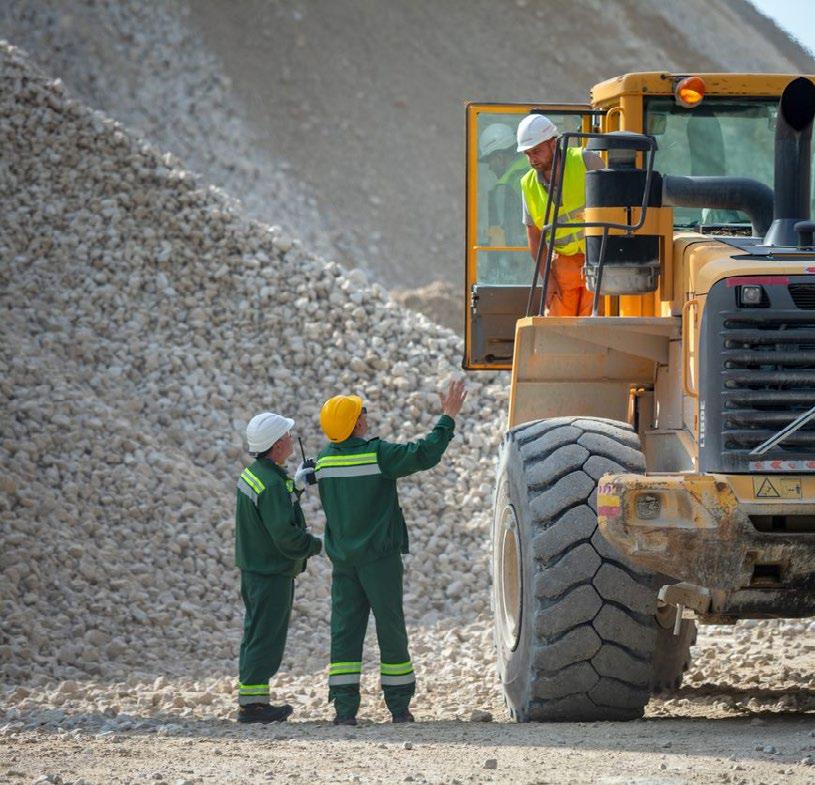
Thus, between September 25-29, 2017, we organized the seventh edition of Occupational Health and Safety Week (Safety Week). During this program, a series of special activities took place in all the company’s headquarters and production units, in order to emphasize the importance of occupational health and safety. The event has been organized internationally since 2011 in over 60 countries where the HeidelbergCement Group is present.
During Safety Week 2017, a series of exercises were organized that simulated the intervention in case of emergencies (fires), in collaboration with the intervention forces within ISU, practical demonstration exercises, which involved rescuing victims from a height and indoors, as well as numerous internal training sessions on various topics (Leadership in the field of occupational health and safety, Safety of contractors, Safety while operating equipment, etc.).
Over 1,000 employees and collaborators of HeidelbergCement Romania attended the exercises during Occupational Health and Safety Week.




Natural resources are the basis of our activity, so we are aware of both the responsibility and the mission we have in accelerating the path to sustainable development. Our main objectives regarding environmental protection are to protect the climate, conserve resources, reduce emissions and the impact that quarries operating activities, as well as production processes, have on the environment.
The conservation of natural resources is a fundamental element of our sustainability strategy. Therefore, we use waste and by-products from other industries, as valuable raw material and fuel in the production process. We use alternative raw material for the production of clinker, the most important intermediate product in the production of cement. This way we reduce the amount of CO2 emitted per unit of final product.
#end-of-life recycled materials (cement division)
2016 2017
Packaging materials 2,514 2,457
#materials used in operations*
2017
Raw materials (t) (fuels, limestone, marl, clay, gypsum, cement, aggregates) 5,066,442.61

Other materials (t) (including refractory bricks and concrete and other grinding materials) 1,784
Packaging materials (t) 4,199
Alternative raw materials (t) (includes pyrite ash, foundry sand, blast furnace slag) 392,380
Additives (kg) 968.81 Water 82,113.06
*Data related to the aggregates division are not included. We are currently working on the development of internal systems that will allow us to monitor these indicators.
Waste is a valuable source of raw materials for HeidelbergCement. Therefore, in addition to the measures we implement to minimize the amount of waste placed on the market, we are constantly looking for ways to streamline the process of waste recovery and reduce the amount resulting from our production processes.
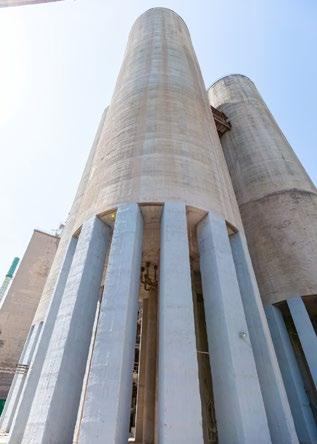
This results in alternative fuels that contribute to the saving of significant amounts of fossil fuels, while the local community benefits from the disposal of waste generated by other industries, such as oil, agriculture and others.
waste disposal method
total amount of hazardous waste (t) total amount of non-hazardous waste (t)
Reuse 173.4
Recycle 0.121 1,801.553
Composting
Storage 148,366.889
Co-processing (waste generated on plant sites, co-incinerated in the clinker kiln)
32.14 32.25
total waste 32.261 150,374.092
recycled waste 2017 (t)
Packaging materials (wood) 233.28
Aluminium 5.82
Lighting fixtures 0.121
Scrapped electrical equipment 24.80
Used refractory materials 65.86
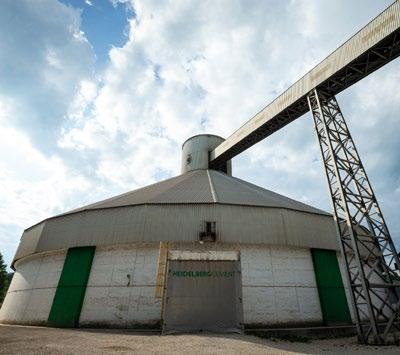
Metal materials 1,467.46
Copper, bronze, brass 0.38 Metal turnings 3.96
Fluorescent bulbs and tubes 0.12
waste disposal method total amount of hazardous waste (t) total amount of non-hazardous waste (t)
Storage 175,296,2
Recovery R12 1,196 342.13
Recovery R1 16.416 total waste 1,196 175,654.746
We are aware that our impact on energy consumption is significant, by the nature of our work. At Group level, we have taken our share of responsibility in keeping global warming below 2° C, in accordance with the Paris Agreement on Climate Change. Thus, we make efforts to minimize energy consumption and to use energy from renewable sources as much as possible.
Total energy consumption 2017 Total value of annual production 2017 204,840 964,577,703
Energy intensity 2017 = = = 0.2124 toe/thousands lei
In 2017, we continued our efforts to reduce energy consumption. Thus, in addition to the development of projects initiated in previous years, we implemented the following measures:
] Operation of the conveyor belts loaded to capacity.
] Use 5% of electrofilter dust as an additive to cement grinding.

] Reducing electricity consumption by developing a procedure to stop transformers in the hot reserve during repairs.
] Tandem operation with 2 marl crushers and a transport relay.
] Use of frequency converters when operating annular engine cooling fan.
] Reducing energy consumption by replacing existing lighting with low-consumption LED bulbs and installing twilight sensors.
] Reducing electricity loss by switching a 40MVA transformer to the cold reserve during winter.
] Replacing classic outdoor and administrative lighting with LED lamp lighting.
energy saved 2017
Investment value (lei) 49,500
Energy saved (toe) 2,106 Energy saved (MWh) 24,489
At HeidelbergCement, climate protection is a key element of the environmental policy. In addition to addressing dust and noise issues, we are facing the challenge of pollutant emissions from our cement plants.

We monitor emissions regularly, and by using new filtration technologies and innovative production processes we reduce the amount of pollutants, thus minimizing the impact our activities have on the environment and local communities. Also, because the cement production process is one that requires high energy consumption, we make great efforts to reduce CO2 emissions.
At Group level, we took on the responsibility of constantly investing in researching innovative solutions to capture and use CO2. At the same time, in 2017 we continued to implement solutions, especially for modernizing plants, in order to reduce noise and dust emissions.
air emissions
Sedimentable
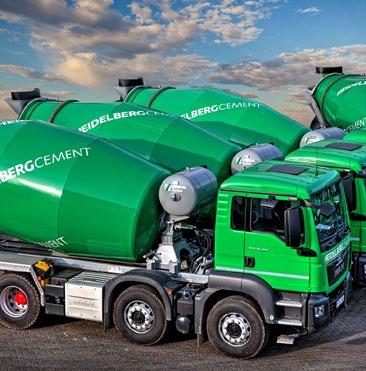
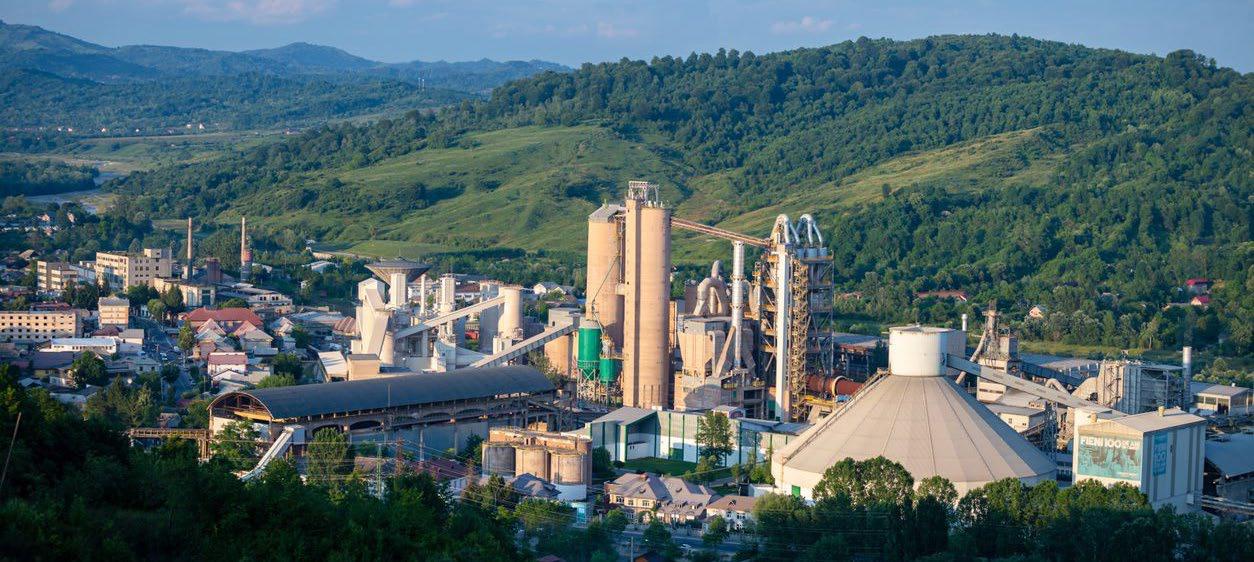
All our locations operate in accordance with the relevant international, national and local legislation, while environmental impact assessment is generally an indispensable condition to allow quarry activity. In addition to being economically attractive, a potential project must be compatible with environmental protection objectives.
Quarry exploitation methods that minimize environmental degradation, as well as the rehabilitation of extraction sites are priorities for us.
In order to promote biological diversity in our quarries and ballast pits, we have adopted at Group level a set of rules for the protection of species. HeidelbergCement is the first company in the construction materials industry to implement such a project. The ten principles described
in these rules are intended to facilitate dialogue with environmental authorities and associations, as well as with the general public. They are also created to promote biological diversity and environmental protection during and after exploitation operations.
geographical positioning bicazul ardelean, neamț county băița crăciunești, hunedoara county lespezi, moroieni commune, dâmbovița county
Position towards the protected area or the high biodiversity value area outside the protected areas
At the border of the Cheile BicazuluiHasmas National Park ROSCI0027
At the border of the Măgurile Băiței protected area
ROSCI0110
At the border of the Bucegi Natural Park ROSCI0013 - part of the transport route of the limestone on conveyor belts is on the territory of the Park
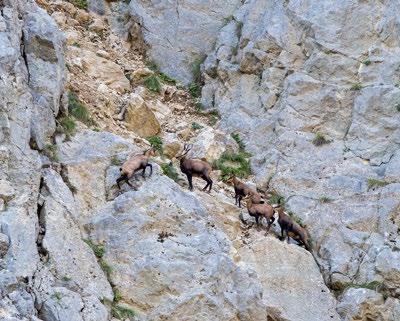
Size of operational site
40 ha 25 ha 25 ha
Biodiversity value characterised by the attributes of the protected area or the high biodiversity value area for outside the protected area
The quarry has a Biodiversity Management Plan; in addition the biodiversity in the quarry and its surroundings has been investigated through several projects within the Quarry Life Award.
Biodiversity in the quarry and its surroundings has been investigated through several projects within the Quarry Life Award.
The quarry has a Biodiversity Management Plan; in addition the biodiversity in the quarry and its surroundings has been investigated through several projects within the Quarry Life Award.

In May 2017, the fourth edition of the Quarry Life Award was launched, a scientific and educational competition that takes place every three years. Its aim is to encourage innovative approaches that increase biodiversity in quarries and raise awareness on mining ecology.
Students, scientists, non-governmental organizations, but also people from the local community had the opportunity to submit projects by November. The competition, which has proven successful in the past, is divided into two categories in 2017, to give equal opportunities to participants, regardless of their knowledge: research and community. The results of the competition will be announced in 2018, when the implementation of the winning projects will take place. More information about the competition can be found here
We assumed responsibility to reduce the impact our activity has on water resources. We follow strict environmental rules to ensure that the extraction of raw materials does not affect local surface water resources and groundwater. Also, in recent years we have introduced a water consumption reporting system in all our cement plants.
HeidelbergCement collects all accumulated surface water and discharges it in a way that ensures that there is no risk of polluting or flooding of quarries or nearby areas.



The water is not discharged into existing surface waters in the area without permit from local authorities. Employee training sessions and regular external inspections ensure compliance to mandatory procedures.
water (m3)
volume
Total volume of water used 115,730.64
Total volume of water recycled 16,937.62
Total volume of water reused
In 2017, water consumption was reduced by 16,937.62 m3. The water discharges in 2017 were planned discharges from all three cement plants, the water quality being within the limits imposed by the Water Management Authorization. The volume was 518.856 m3




As world leader in the building materials industry, HeidelbergCement recognizes its social responsibilities and is strongly committed to the areas in which it has the greatest expertise. Thus, HeidelbergCement supports projects for the public benefit, contributing financially or with construction materials, in the following areas:
] constructions, architecture, infrastructure;
] environment, climate, biodiversity;

] education, training, culture.
At its 13th edition, the contest held at the end of 2017 brought together a record number of participants, reaching 200 students.
The annual Carpatcement Professional Awards competition already has a 13-year history and is organized by the Technical Consulting Department within the company. The competition aims to support the performance of future construction engineers and takes place in six technical schools in the main university centers in the country (Bucharest, Iași, Timișoara, Cluj-Napoca and Brașov). During the competition, graduates of construction universities in Romania can learn about the Carpatcement® product portfolio, news in the field of cement and concrete, as well as the fact that HeidelbergCement Romania is directly involved, as a company responsible for developing future specialists, in supporting professional performance, through a fair and fully transparent process.
As in each of the previous editions, the contest consisted of solving a grid test, developed based on a bibliography that includes technical literature, articles, advertorials and
presentations of HeidelbergCement Romania. The general objective is the individual professional stimulation of students in higher education in construction.
At each of the six participating colleges, winners of the competition were awarded substantial prizes: First Prize800 euro, Second Prize - 500 euro and Third Prize - 200 euro, the total value of prizes at national level being 9,000 euro. The winners also received diplomas and medals, and the best participants also received letters of recommendation, which are important assets in employment.
In order to ensure succesfull organization of the contest (promotion, local organization, etc.) our team collaborated with the B.E.S.T. Student Association (Board of European Students of Technology), through its branches in Iași, Timișoara, Brașov, Cluj-Napoca and Bucharest.
Started in 2013, this social responsibility project takes place in four stages each year, in the three cement plants of HeidelbergCement Romania, in order to inform and educate the members of the communities in which we operate regarding our environmental impact.




In 2017, 117 high school students monitored the values of environmental indicators, under the guidance of our specialists. Students begin by visiting the plant, the continuous emission monitoring facility, the control room and continue with the training provided by the environmental manager on the procedures of measuring the indicators, with access to the data history and tools that ensure continuous monitoring, thus visualizing the evolution of the monitored processes.
Another main component of the program is the development of environmental education among young people, offering students with environmental protection and ecology major in the host communities the opportunity to apply the notions learned in school under specialized guidance.




Launched in June 2017, the route is located at the heart of the Cheile Șugăului - Munticelu Nature Reserve, in Bicaz Chei (Neamț county). Via Ferrata Astragalus brings an absolute novelty for Romania - adventure and recreation in nature, a combination of climbing and hiking, accessible to the general public.The name comes from Italian, where it means “railroad”. In addition to the special landscape and exceptional natural heritage, the site of Via Ferrata Astragalus, Cheile Șugăului-Munticelu, a NATURA 2000 site, hosts a unique plant species, which was identified here for the first time in the worldAstragalus pseudopurpureus. Most of the population of this plant (95% of the world total) is found only here, being the hallmark of the reservation.
The Via Ferrata Astragalus is an element of infrastructure integrated in a more complex projectConservative Management for a wonder of nature, an activity funded by the European Union. The Romanian Mountain Club and HeidelbergCement Romania concluded a partnership at the end of 2015 for the construction of this Via ferrata route inside the Cheile Șugăului-Munticelu Nature Reserve.
The route is the first project of this kind in Romania made according to Western standards, following the model of those in Austria and Germany, with the support of HeidelbergCement Romania. The total investment amounts to approximately 20,000 euro.
In July 2017, the Floare de Colţ Ecological Association, in partnership with HeidelbergCement Romania and the Coresi School, organized the “Mountaineers at work” volunteering and non-formal education mountain-themed camp. During the four days, the 36 students aged 10 to 18, attended specific activities - mountain hiking, restoration and greening of mountain tourist routes, rock and panel climbing, rappelling and zip-lining, fun themed games or campfire.

The activities took place in the Bucegi Mountains. The project is part of the “Nature teaches us the first steps in life” program, which involved 3,678 people (children, young people, parents, teachers, monitors) in the 72 stages carried out over seven years.


In 2017, we supported the BikeXpert Alpine Challenge project, an initiative of our partners from the Bikexpert Sports Club. BikeXpert Alpine Challenge is a challenging mountain bike competition that aims to support an energetic lifestyle and promote cycling, as a healthy and environmentally friendly way to spend time off, in the Curvature Subcarpathians and the Leaota Mountains.
The event welcomes nature lovers, amateur and professional cyclists who want to test their skills on two wheels, in an unforgettable natural setting. At each edition there are children routes, a 16 km route and a XCO type route, set in the Pucioasa city park. Part of the funds obtained from the registration fees at BikeXpert Alpine Challenge were donated to MagiCAMP, a special camp for children with cancer, near Pucioasa.
Quality education is one of the pillars of HeidelbergCement Romania’s community investment strategy. Beyond the educational act and the teaching process, it is extremely important for children to carry out their activity in well-designed spaces, which offer them the best conditions. Thus, at the initiative of the Step by Step Center, in 2017 we supported the renovation of the Early Education Center in Bucharest, where approximately 200 children study monthly.
The mission of the Step by Step Center is to promote the values of a global society open to the development of a quality, democratic, innovative educational system, ensuring respect for diversity. The association operates through multifunctional centers of education and training, personal development and integrated services. The multifunctional center puts into practice the current philosophy related to the early development of the child by satisfying the needs of health and nutrition, education, protection and parenting support in a unit that includes all these services.

engagement
GRI 102
disclosures
GRI 102
There
GRI
water and effluents
GRI
GRI 303
and effluents
topic
Management
GRI 304
economic value generated
distributed
GRI 201 Economic performance
Financial implications and other risks and opportunities
to climate change
benefit plan obligations and other retirement plans
Financial assistance received from government
presence
GRI 103 Management approach
of the material topic and its Boundary
Managerial approach and its components
Evaluation of the management approach
GRI 202 Market presence
Proportion of senior management hired from the local community
economic impacts
GRI 103 Management approach
of the material topic and its Boundary
Managerial approach and its components
Evaluation of the management approach
The information presented
as detailed
required by the standard
the fact that it represents confidential information,
its disclosure
competitive disadvantage.
GRI 203
Indirect economic
and services
procurement practices
GRI 103 Management approach
indirect economic
GRI 204
practices
communities
Explanation of the material topic and its Boundary
Managerial approach and its components
Evaluation of the management approach
Proportion of spending on local suppliers
GRI 103 Management approach
103-1 Explanation of the material topic and its Boundary
Managerial approach and its components
Evaluation of the management approach
GRI 413
Local communities
Operations with local community engagement, impact assessments, and development programs
GRI 103 Management approach
Explanation of the material topic and its Boundary
Managerial approach and its components
Evaluation of the management approach
25, 31
GRI 205
205-2 Communication and training on anticorruption policies and procedures
Confirmed incidents of corruption and actions taken
anti-competitive behaviour
GRI 103 Management approach 2016
GRI 206 Anti-competitive behaviour 2016
103-1 Explanation of the material topic and its Boundary
103-2 Managerial approach and its components
103-3 Evaluation of the management approach
206-1 Legal actions for anti-competitive behaviour, anti-trust, and monopoly practices
socioeconomic compliance
GRI 103 Management approach 2016
GRI 419
Socioeconomic compliance 2016
103-1 Explanation of the material topic and its Boundary
103-2 Managerial approach and its components
103-3 Evaluation of the management approach
419-1 Non-compliance with laws and regulations in the social and economic area
customer health and safety
GRI 103 Management approach 2016
103-1 Explanation of the material topic and its Boundary
103-2 Managerial approach and its components
103-3 Evaluation of the management approach
GRI 416 Customer
health and safety 2016
416-1 Assessment of the health and safety impacts of product and service categories 14, 20
marketing and labelling
GRI 103 Management approach 2016
GRI 417 Marketing and labelling 2016
103-1 Explanation of the material topic and its Boundary 27
103-2 Managerial approach and its components 21
103-3 Evaluation of the management approach 22, 30
417-1 Requirements for product and service information and labelling 12.8
21, 30 employment
GRI 103 Management approach 2016
103-1 Explanation of the material topic and its Boundary 27
103-2 Managerial approach and its components 36
Evaluation of the management approach 38, 43-44
New employee hires and employee turnover
GRI 401 Employment
Benefits provided to full-time employees
not
– management relations
GRI 103 Management approach
the material topic
Managerial approach and its components
Evaluation of the management approach
GRI 402 Labor –management relations
notice periods regarding
changes
health and safety
GRI 103 Management approach
of the material topic
GRI 403
Occupational health
safety
Boundary
Managerial approach and its components
of the management approach
health and safety management system
Hazard identification, risk assessment, and incident investigation
Occupational health services
participation, consultation, and communication on occupational health and safety
training on occupational health and safety
training and education
GRI 103 Management approach
103-1 Explanation of the material topic and its Boundary
103-2 Managerial approach and its components
Evaluation of the management approach
404-1 Average hours of training per year per employee
GRI 404
Training and education
404-2 Programs for upgrading employee skills and transition assistance programs
404-3 Percentage of employees receiving regular performance and career development reviews
diversity and equal opportunity
GRI 103 Management approach
8.5
8.5
GRI 405
and equal opportunity
103-1 Explanation of the material topic and its Boundary 28
Managerial approach and its components 23, 39-40
Evaluation of the management approach
Diversity of governance bodies and employees
supplier social assessment
GRI 103 Management approach
103-1 Explanation of the material topic and its Boundary
Managerial approach and its components
Evaluation of the management approach
GRI
Management
